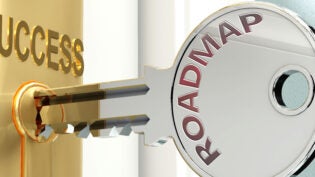
How many countless meetings have you been in that seemed to have no clear purpose, no agenda (or the agenda was hijacked), ran too long, and left you feeling like you just wasted precious time? As an entrepreneur, you and your team must be making the best use of your time together each week – that you’re focused on the priorities that are going to have the biggest impact on your business.
Leadership Team Meetings
A weekly leadership team meeting in an entrepreneurial organization should give you and your team the right amount of connection to keep everyone on the same page but not so much that you’re overlapping each other to the point of inefficiency.
It should be THE meeting each week that is structured so you can spend your valuable time together working ON the business instead of IN the business. We have helped many thousands of leadership teams get more of what they want out of their businesses by teaching them how to use the Level 10 Meeting Agenda.
You start with a 5-minute Segue. During the segue, each member of the team shares one piece of personal good news and one piece of professional good news. The psychology behind this is that it’s a clear shift from working in the business and setting the team up to work on the business. This gets the meeting participants engaged and ready to tackle status updates and agenda items.
During the reporting section of the meeting, you take 5 minutes to review your Scorecard measurables, quickly highlighting those that are “on track” and those that are “off track.” Those that are off track drop down to an Issues List. There’s no discussion or debate during the reporting phase. This keeps the meeting moving forward and prevents it from being derailed and causing a longer meeting time.
You then take 5 minutes to review your primary objectives for the quarter that we call Rocks. Again, on track or off track. If on track you’re moving on. If off track, drop it down to the Issues List. You share any employee or client headlines within 5 minutes to round out the reporting section of the meeting.
Next up on the agenda is a 5-minute review of the To-Do List. This list is compiled during each week’s meeting and reviewed the following week. It drives accountability. Ideally, each week 90% of the To Dos are To Done.
Identify, Discuss, and Solve
You then spend the next 60 minutes of a 90-minute weekly meeting working together as a leadership team solving the most important issues in your business that week. After checking with each other to make sure the Issues List is complete, you then use a tool we call the Issue Solving Track or IDS. IDS stands for Identify, Discuss, Solve.
 This tool stems from a discovery that even great leadership teams tend to get in a room and discuss, discuss, discuss the heck out of an issue but never really get to the root cause and rarely take action to make it go away forever for the greater good of the organization.
This tool stems from a discovery that even great leadership teams tend to get in a room and discuss, discuss, discuss the heck out of an issue but never really get to the root cause and rarely take action to make it go away forever for the greater good of the organization.
The way IDS works is you first prioritize the 1, 2, and 3 most important issues you and your leadership team need to tackle this week. You start with number one and dig, dig, dig down to the root cause because what’s written on the Issues List is probably a symptom.
Once you’ve identified the root cause, you then briefly discuss the issue with no one repeating themselves, because repeating is politicking. When the conversation winds down. The team then moves to solve the issue, which typically requires someone to take action to remedy the issue. You move on to the second most important issue and repeat the process.
In some weeks you will knock down three, six, nine, or more issues. In other weeks, you might only get through one big meaty issue. Either way, this is the best use of your leadership team’s time each week, moving the business forward by tackling your biggest priorities.
With about five minutes to go in the meeting, you move to Conclude. You determine if any messages need to be cascaded out, update your to-do list, and close the meeting by rating how you did together, 1-10 with 10 being best.
In time, you’ll find that your meetings will improve from perhaps an average of 4, 5 or 6 to 8, 9 or 10, making it the Level 10 meeting.
2673 Views












